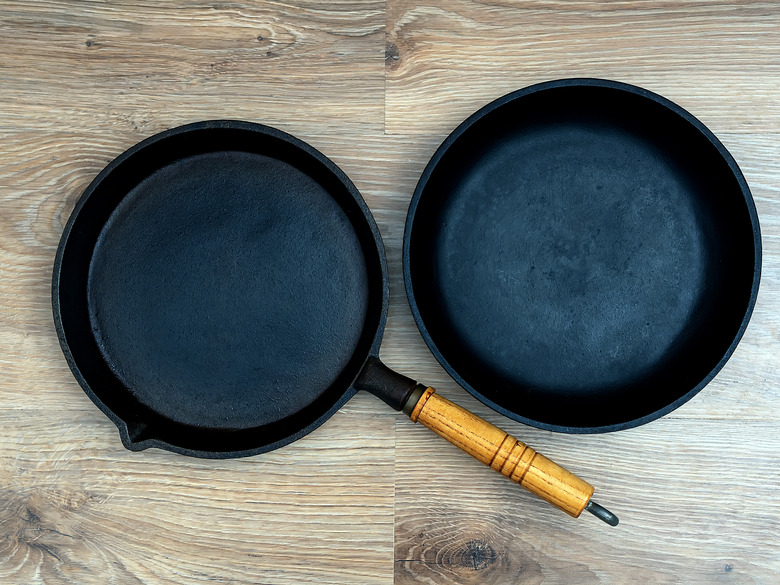Is A Cast-Iron Skillet With A Wood Handle Oven Safe?
We may receive a commission on purchases made from links.
Cookware with wooden parts, including cast-iron skillets with wood handles, is not oven safe. Wood in a closed oven won't burst into flame until temperatures climb over 800 degrees Fahrenheit, but wood creates a different fire hazard at lower temperatures well within the range of a conventional even. At broiling temperatures, wood emits combustible gases that can suddenly ignite. At baking temperatures, wooden grips might split, making a cast-iron skillet unsafe to handle.
Tip
No skillet with a wood handle, even a cast-iron skillet, is oven safe. The wood can't handle the high temperatures in an oven and can dry out, shrink, release chemicals, or even cause a fire.
Cast-Iron Cookware
Cast-Iron Cookware
Many cast-iron cookware products consist of one-piece iron castings. Plain cast-iron handles heat quickly and can become too hot to handle, even on the stovetop, without protection. Cast-iron products with wooden grips on the handles protect users from the heat and offer easier, safer handling when used on stovetops.
While cast-iron pans with wooden handles are safe to use on the stovetop, they're not safe to use in the oven. Wooden handle construction includes insulating spacers to shield the grip from the hot cooking vessel. In an oven, the wooden grip loses that protection. Moisture cooks out of the wood and causes shrinkage. At high temperatures, the wood vents flammable gases and adds unwanted flavors to the food.
Wood Handle Fire Hazards
Wood Handle Fire Hazards
The exact temperature at which wood bursts into flame varies with the species and the moisture content. Some woods contain flammable resins that burn easily, while the dense structure of other woods delays combustion.
Pyrolysis of wood begins at about 480 degrees F, well below the average combustion temperature. Pyrolysis releases combustible gases from wood, including carbon monoxide and methane. Oils or finishes on a wood handle contribute other gases to this flammable mix. Wood does not catch fire at oven temperatures. But wood gases accumulating in the oven can explode in a flash fire if ignited by a spark or flame.
Safe Temperatures for Pans
Safe Temperatures for Pans
A gas flame reaches 1,400 degrees F, more than enough to melt an aluminum pan. Cast-iron skillets keep their shape and strength at temperatures up to 1,700 degrees F. Left on a gas burner, a cast-iron pan's wooden handle might catch fire, but the pan itself remains stable. Melamine resin grips withstand temperatures up to 300 degrees F, but wood products can only be used in an oven at warming temperatures. Oven temperatures above 200 degrees F can affect the appearance and distort the shape of wood products.
Seasoning Cast Iron
Seasoning Cast Iron
Cast iron rusts unless you season the pan by cooking vegetable oil into the pores of the metal. As the oil cooks off, a carbon residue forms a protective coating that prevents food from sticking to the pan and shields the iron from corrosive liquids.
Rubbing a cast-iron skillet thoroughly with oil or shortening and baking it for 60 minutes at 400 degrees F efficiently seasons a new pan. For cast-iron cookware with wooden grips, oil the pan and heat it slowly over a stove top burner until the oil burns off. Take the pan off the heat and set it aside to cool.
